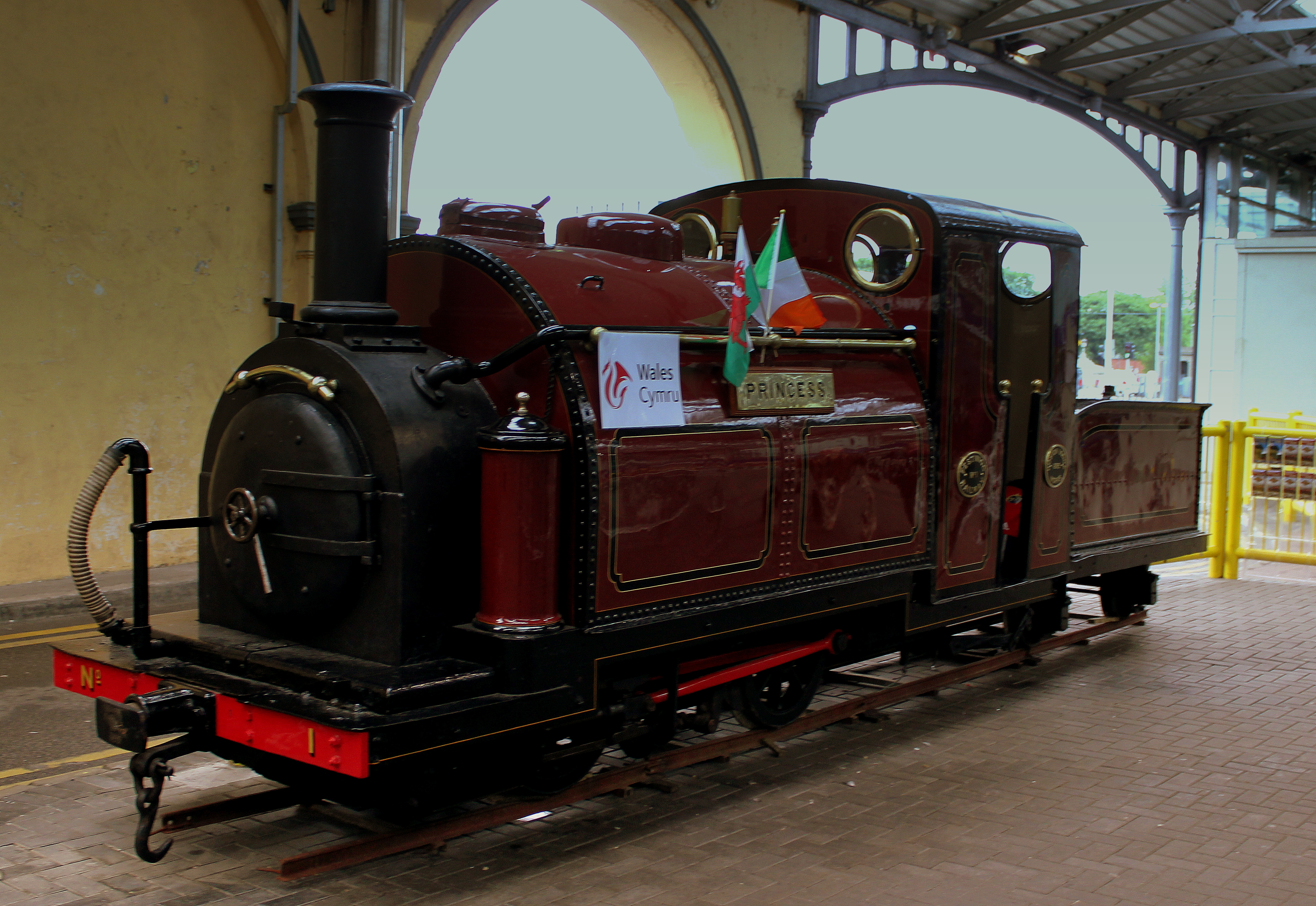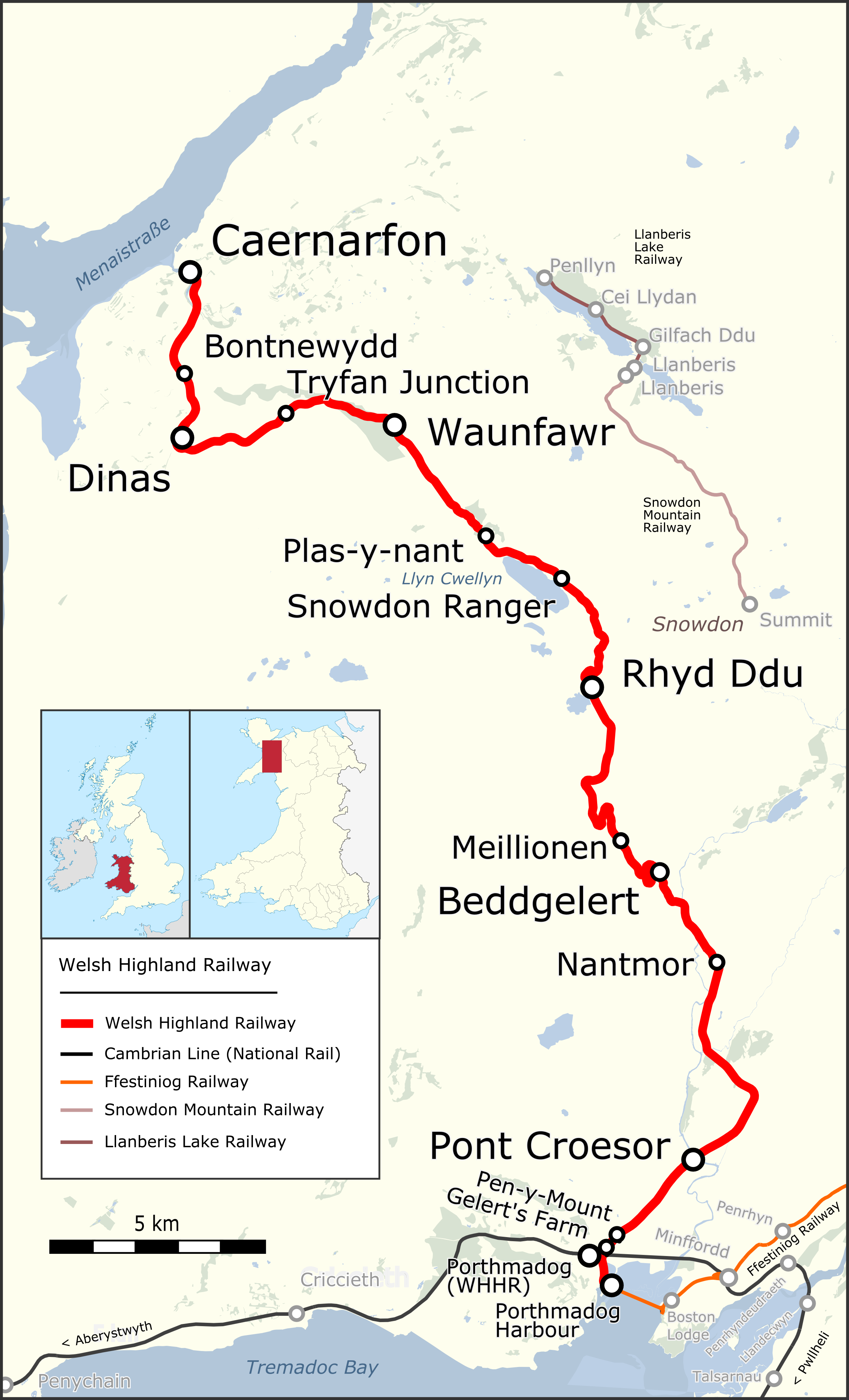|
Festiniog Railway Princess
''Princess'' is an steam locomotive built by George England for the Ffestiniog Railway in 1863. It is one of the earliest narrow gauge steam locomotives and is one of the three oldest surviving narrow gauge locomotives still on its original railway. History ''Princess'' was the first steam locomotive delivered to the Ffestiniog Railway. She was originally named ''The Princess'' - after Alexandra of Denmark, Princess Alexandra of Denmark - and carried the number 1. As delivered she was an 0-4-0 Tank locomotive#Side tank, side tank without a cab. She began hauling public trains in September 1863. From 1868, ''The Princess'' began hauling trains on the Festiniog and Blaenau Railway as well as the Ffestiniog Railway. In December 1882, ''The Princess'' underwent a substantial overhaul and a large cast iron weight was placed over the side tanks and boiler, giving the locomotive extra adhesive weight and the appearance of a Tank locomotive#Saddle tank, saddle tank. She continued to ... [...More Info...] [...Related Items...] OR: [Wikipedia] [Google] [Baidu] |
George England
George England ( 1811–1878) was an English businessman and engineer. He founded George England and Co., a steam locomotive manufacturing business based in Hatcham, New Cross. Early life England was born around 1811, in Newcastle upon Tyne. He moved to London and trained at the John Penn Boilerworks and Shipyards in Deptford. Hatcham Ironworks In 1839, England patented a traversing screw jack. In the 1840s, he set up his own works near New Cross: the ''Hatcham Ironworks''. In the 1850s, he also had a large house built for his family and a terrace of cottages for his workers built on the site. He soon began working to build railway locomotives. The first locomotive produced at Hatcham was a 2-2-2 in December 1848 for the Newhaven Branch of the LBSCR. In 1851 he took part on the Great Exhibition where his patented screw jack and another 2-2-2 locomotive were shown; the locomotive won a gold medal. George England and Co. then produced a steady number of locomotives for cus ... [...More Info...] [...Related Items...] OR: [Wikipedia] [Google] [Baidu] |
Welsh Highland Railway
The Welsh Highland Railway (WHR) or Rheilffordd Eryri is a long, restored narrow gauge heritage railway in the Welsh county of Gwynedd, operating from Caernarfon to Porthmadog, and passing through a number of popular tourist destinations including Beddgelert and the Aberglaslyn Pass. At Porthmadog it connects with the Ffestiniog Railway and to the short Welsh Highland Heritage Railway. In Porthmadog it uses the United Kingdom's only mixed gauge flat rail crossing. The restoration, which had the civil engineering mainly built by contractors and the track mainly built by volunteers, received a number of awards. Originally running from , near Caernarfon, to ,Boyd (1972), pages=283 the current line includes an additional section from Dinas to Caernarfon. The original line also had a branch to and the slate quarries around Moel Tryfan, which has not been restored. (This branch forms a footpath "rail trail", the lower section of which has been resurfaced and supplied with heri ... [...More Info...] [...Related Items...] OR: [Wikipedia] [Google] [Baidu] |
Railway Locomotives Introduced In 1863
Rail transport (also known as train transport) is a means of transport that transfers passengers and goods on wheeled vehicles running on rails, which are incorporated in Track (rail transport), tracks. In contrast to road transport, where the vehicles run on a prepared flat surface, rail vehicles (rolling stock) are directionally guided by the tracks on which they run. Tracks usually consist of steel rails, installed on Railroad tie, sleepers (ties) set in track ballast, ballast, on which the rolling stock, usually fitted with metal wheels, moves. Other variations are also possible, such as "slab track", in which the rails are fastened to a concrete foundation resting on a prepared subsurface. Rolling stock in a rail transport system generally encounters lower friction, frictional resistance than rubber-tyred road vehicles, so passenger and freight cars (carriages and wagons) can be coupled into longer trains. The rail transport operations, operation is carried out by a ... [...More Info...] [...Related Items...] OR: [Wikipedia] [Google] [Baidu] |
George England And Company Locomotives
George may refer to: People * George (given name) * George (surname) * George (singer), American-Canadian singer George Nozuka, known by the mononym George * George Washington, First President of the United States * George W. Bush, 43rd President of the United States * George H. W. Bush, 41st President of the United States * George V, King of Great Britain, Ireland, the British Dominions and Emperor of India from 1910-1936 * George VI, King of Great Britain, Ireland, the British Dominions and Emperor of India from 1936-1952 * Prince George of Wales * George Papagheorghe also known as Jorge / GEØRGE * George, stage name of Giorgio Moroder * George Harrison, an English musician and singer-songwriter Places South Africa * George, Western Cape ** George Airport United States * George, Iowa * George, Missouri * George, Washington * George County, Mississippi * George Air Force Base, a former U.S. Air Force base located in California Characters * George (Peppa Pig), a 2-year-old pig ... [...More Info...] [...Related Items...] OR: [Wikipedia] [Google] [Baidu] |
Narrow Gauge Locomotives Of The United Kingdom
Narrow may refer to: * The Narrow, rock band from South Africa * Narrow banking, proposed banking system that would eliminate bank runs and the need for a deposit insurance * narrow gauge railway, a railway that has a track gauge narrower than the 4 ft 8½ in of standard gauge railways * Narrow vs wide format, a style of displaying tabular data * Narrowboat or narrow boat, a boat of a distinctive design made to fit the narrow canals of Great Britain * ''Narrow'' (album), a 2012 album by Austrian musical project Soap&Skin * "Narrow", a song by Mayday Parade from '' Black Lines'' See also * Narro (other) * The Narrows (other) The Narrows is a strait in New York City separating Brooklyn and Staten Island. The Narrows may also refer to: Places Antarctica * The Narrows (Antarctica), a strait Australia *The Narrows, an isthmus providing the only land access to Queensclif ... * Narrowing (other) * * {{disambiguation ... [...More Info...] [...Related Items...] OR: [Wikipedia] [Google] [Baidu] |
List Of Ffestiniog Railway Rolling Stock
The Ffestiniog Railway The Ffestiniog Railway ( cy, Rheilffordd Ffestiniog) is a heritage railway based on narrow-gauge, located in Gwynedd, Wales. It is a major tourist attraction located mainly within the Snowdonia National Park. The railway is roughly long an ... owns and operates a number of heritage and modern-day steam and diesel locomotives. A full list of these locomotives with details of their operational status is provided below. Locomotives The list includes past locomotives and present locomotives that are owned by, or permanently housed at, the Ffestiniog Railway: Steam locomotives Diesel locomotives Other rolling stock For more detailed information on current and past rolling stock, visit the Railways owHeritage Group Wikipedia These are the existing vehicles that are owned by or are permanently housed on the Ffestiniog Railway:- Four-wheel passenger coaches and vans The principal source of information for this table is the: "Rheilffordd Ffestiniog ... [...More Info...] [...Related Items...] OR: [Wikipedia] [Google] [Baidu] |
Paddington Station
Paddington, also known as London Paddington, is a Central London railway terminus and London Underground station complex, located on Praed Street in the Paddington area. The site has been the London terminus of services provided by the Great Western Railway and its successors since 1838. Much of the main line station dates from 1854 and was designed by Isambard Kingdom Brunel. Paddington is the London terminus of the Great Western Main Line; passenger services are primarily operated by Great Western Railway, which provides the majority of commuter and regional passenger services to west London and the Thames Valley region as well as long-distance intercity services to South West England and South Wales. The station is also the eastern terminus for Heathrow Express and the western terminus for Elizabeth line services from Shenfield. Elizabeth line services also run through Paddington westwards to Reading, Heathrow Terminal 5, and Heathrow Terminal 4, and eastwards to Abbey Wood ... [...More Info...] [...Related Items...] OR: [Wikipedia] [Google] [Baidu] |
Porthmadog Harbour Railway Station
Porthmadog Harbour railway station (formerly known as ''Portmadoc'' Harbour railway station) in Porthmadog (formerly ''Portmadoc''), Gwynedd (formerly Merioneth), North Wales. It is the passenger terminus of two narrow gauge railways: the Ffestiniog Railway, which was opened in 1836 to carry dressed slate from the Quarries around Blaenau Ffestiniog to the sea port of Porthmadog, for export by sea; and the Welsh Highland Railway, incorporated in 1923, which ran to Dinas. After rebuilding in 1997-2011, the other terminus is at Caernarfon, in sight of the Castle. History The station is built at the western end of the Cob, the great embankment across the Traeth Mawr, on a peninsula from Ynys Madoc constructed in 1842 to form a slate wharf and a harbour wall. It was opened for passenger service on 6 January 1865. Welsh Highland Railway trains served the station from 1923, with a short period when all passenger traffic was diverted to Portmadog New station near the crossing w ... [...More Info...] [...Related Items...] OR: [Wikipedia] [Google] [Baidu] |
Blaenau Ffestiniog
Blaenau Ffestiniog is a town in Gwynedd, Wales. Once a slate mining centre in historic Merionethshire, it now relies much on tourists, drawn for instance to the Ffestiniog Railway and Llechwedd Slate Caverns. It reached a population of 12,000 at the peak development of the slate industry, but fell with the decline in demand for slate. The population of the community, including the nearby village Llan Ffestiniog, was 4,875 in the 2011 census: the fourth most populous in Gwynedd after Bangor, Caernarfon and Llandeiniolen. The population not including Llan is now only about 4,000. Etymology and pronunciation The meaning of Blaenau Ffestiniog is "uplands of Ffestiniog". The Welsh word ' is the plural of ' "upland, remote region". Ffestiniog here is probably "territory of Ffestin" (Ffestin being a personal name) or could possibly mean "defensive place". The English pronunciation of Blaenau Ffestiniog suggested by the ''BBC Pronouncing Dictionary of British Names'' is , but the f ... [...More Info...] [...Related Items...] OR: [Wikipedia] [Google] [Baidu] |
Adhesive Weight
Adhesive weight is the weight on the driving wheels of a locomotive, which determines the frictional grip between wheels and rail, and hence the drawbar pull which a locomotive can exert. See also *Factor of adhesion *Tractive effort As used in mechanical engineering, the term tractive force can either refer to the total traction a vehicle exerts on a surface, or the amount of the total traction that is parallel to the direction of motion. In railway engineering, the term tr ... References Locomotives {{rail-transport-stub ... [...More Info...] [...Related Items...] OR: [Wikipedia] [Google] [Baidu] |
Allan Valve Gear
The Stephenson valve gear or Stephenson link or shifting link is a simple design of valve gear that was widely used throughout the world for various kinds of steam engines. It is named after Robert Stephenson but was invented by his employees. Historical background During the 1830s, the most popular valve drive for steam locomotives was known as '' gab motion'' in the United Kingdom and'' V-hook motion'' in the United States. The gab motion incorporated two sets of eccentrics and rods for each cylinder; one eccentric was set to give forward and the other backwards motion to the engine and one or the other could accordingly engage with a pin driving the distribution valve by means of the gabs: - vee-shaped ends to the eccentric rods supposed to catch the rocker driving the valve rod whatever its position. It was a clumsy mechanism, difficult to operate, and only gave fixed valve events. In 1841, two employees of Robert Stephenson and Company, draughtsman William Howe and patt ... [...More Info...] [...Related Items...] OR: [Wikipedia] [Google] [Baidu] |


.jpg)
.jpg)